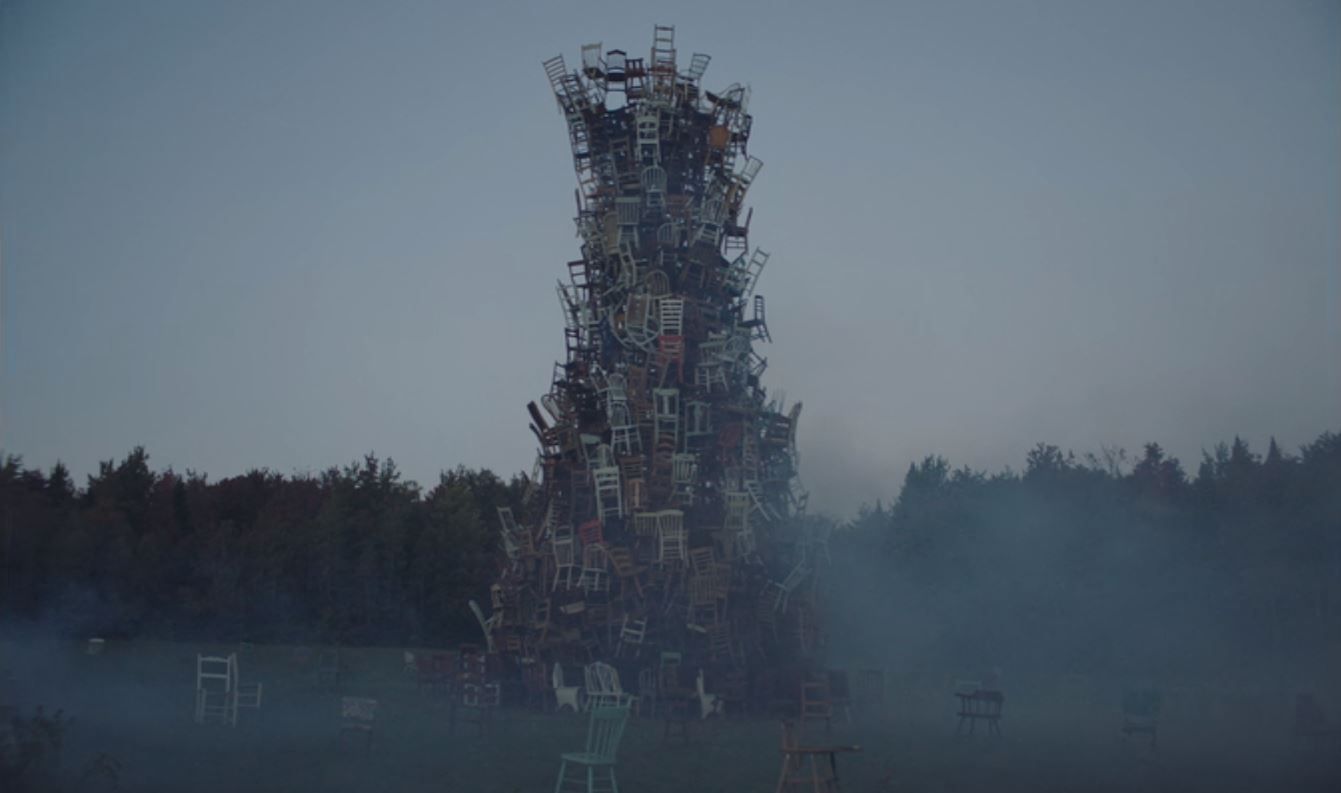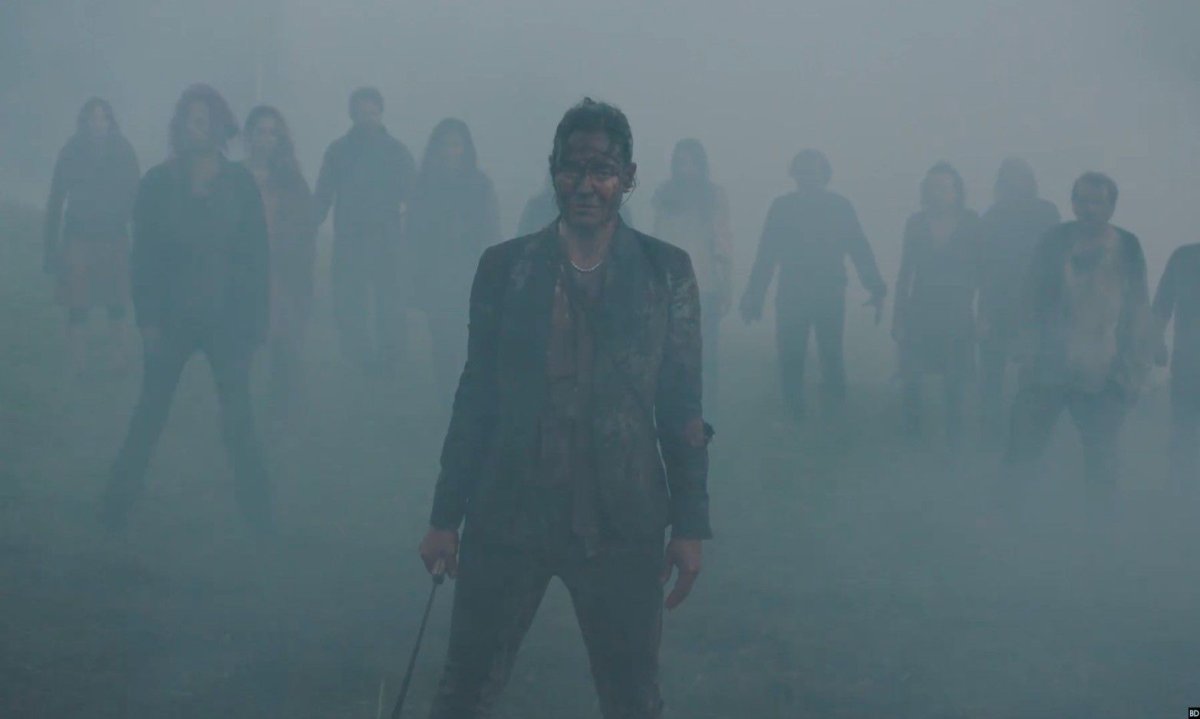
Ravenous, a horror movie released to Netflix on Friday, takes the zombie movie in some unexpected new directions, but it's the enigmatic ending that might have audiences most confused.
When Ravenous opens, the zombie outbreak is already old news. Our characters manage to survive in rural Quebec, eking out a subsistence lifestyle after losing their families and friends, many of whom they had no choice but to kill. But more zombies have begun appearing in the woods for reasons never quite explained. One survivor theorizes that the hordes have torn through the cities and returned to the countryside in search of human flesh. By the midpoint of Ravenous, our characters must flee their homes and routines to set off into the woods in search of a new refuge.
They encounter zombie behavior unlike anything in the postapocalyptic worlds of George Romero or The Walking Dead. While these zombies eat humans and spread the infection with their bites, there's more to their behavior than predatory hunger. Zombies set primitive traps, luring people into the woods and surrounding them. And, most bizarre of all, the zombies of Ravenous build massive towers of household objects in the middle of fields. It's almost like rudimentary religious behavior, with zombies standing around and worshipping at the makeshift shrines.
This leads to some of the most chilling imagery in Ravenous, particularly toward the movie's end, when our survivors encounter an immense shrine built of kitchen chairs, a tower that indicates the vast size of the horde inhabiting the area.
Spoiler Warning: As is probably obvious by now, we'll be discussing the ending. Watch first, read later.
After losing several characters, the fleeing survivors discover a well-fortified bunker near a quarry. It's been stripped of supplies, making it only a temporary reprieve. They stay the night but must set out again in the morning, and they quickly find themselves lost in the fog. Wandering out into a field, they hear the sound of a baby crying, only to find it's not a living human but a crying baby doll clutched in the hands of an undead woman who's crouched in front of the biggest shrine they've yet discovered: the soaring tower of chairs. It's here that they will make their last stand.
The fog lifts and they realize that just as at every other shrine, this one has a perimeter of silent worshippers—zombies standing in a huge circle around it. In an earlier encounter near a smaller pile of objects, they were able to blend in by staring and "worshipping" with the zombies, slinking away when the undead returned their attention to their strange shrine. But it doesn't work this time: The zombie with the baby doll shrieks, bringing the horde on to their location.
Therese (Marie-Ginette Guay), who had to kill her wife the previous day, refuses to run, instead allowing the zombies to swarm her. Celine (Brigitte Poupart) stands and fights, swinging her machete through the swarm until she too is brought down. Clear of the field, Bonin (Marc-Andre Grondin) guards their escape with a shotgun, while Tania (Monia Chokri) hides the little girl, Zoe (Charlotte St-Martine), back in a tunnel in the quarry. The zombies close in on Zoe, but right in time Tania leads them away, drawing the zombie's attention to the accordion she carries on her back. Zoe makes her way back to the bunker only to find it piled with dead zombies, defeated by Bonin during his retreat. Bonin is still alive, but the bite in his neck spells his doom. He shares a joke with Zoe and sends her out with the shotgun he had intended to use on himself.

Now there is only Zoe, who sets out on her own, discovering Tania's accordion along the way. She comes across a smaller shrine, this one of children's toys, but doesn't run into any more zombies. After her long day of walking, a racecar driver (seen at the very beginning of the movie) picks her up on a forlorn highway. Maybe together they'll have better luck than Bonin, Tania and the others lost along the way.
After the credits, Ravenous returns to the shrine of chairs. While Celine, Bonin and Tania managed to kill most of the zombie horde worshipping there, they are now zombie worshippers themselves.
While the ending of Ravenous is in some ways traditional—everyone dies—it can feel a little enigmatic, thanks to the aura of mystery built around zombie behavior.
In Romero's zombie movies, the flesh eaters retain some of their habits from life. In Dawn of the Dead, zombies gather at the mall, instinct returning them to the place where they socialized in life. In Land of the Dead, a zombie gas station attendant keeps at his post, meaninglessly squirting gas in imitation of how he'd once behaved. Ravenous takes a more mystical approach. Rather than imitating old habits, these zombies behave obsessively, carefully gathering mundane objects that no longer hold the same meaning for them. They fetishize and worship objects that had once been merely functional. The last image, of a parrot incongruously perched on the shrine of chairs, hints at the function of zombie behavior: Unable to act human, they instead imitate, to repetitive and grotesque ends.
Uncommon Knowledge
Newsweek is committed to challenging conventional wisdom and finding connections in the search for common ground.
Newsweek is committed to challenging conventional wisdom and finding connections in the search for common ground.
About the writer
To read how Newsweek uses AI as a newsroom tool, Click here.








